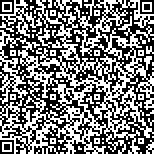| 引用本文: | 耿颖,廖萍,邓艳平,魏宁漪,谭德讲,杨泉,周学海,谢少斐,朱容蝶,王蕊,陈华,陈桂良.鼻用喷雾剂/气雾剂生物等效性评价及其统计学应用考量[J].中国现代应用药学,2023,40(20):2827-2837. |
| GENG Ying,LIAO Ping,DENG Yanping,WEI Ningyi,TAN Dejiang,YANG Quan,ZHOU Xuehai,XIE Shaofei,ZHU Rongdie,WANG Rui,CHEN Hua,CHEN Guiliang.Statistical Evaluation Methods and Considerations of Bioequivalence Studies for Nasal Sprays and Nasal Aerosols[J].Chin J Mod Appl Pharm(中国现代应用药学),2023,40(20):2827-2837. |
|
| |
|
|
| 本文已被:浏览 2206次 下载 934次 |

码上扫一扫! |
|
|
| 鼻用喷雾剂/气雾剂生物等效性评价及其统计学应用考量 |
|
耿颖1, 廖萍2, 邓艳平3, 魏宁漪1, 谭德讲1, 杨泉4, 周学海5, 谢少斐6, 朱容蝶7, 王蕊8, 陈华1, 陈桂良2
|
|
1.中国食品药品检定研究院, 北京 102629;2.上海药品审评核查中心, 上海 201210;3.福建医科大学, 福州 530122;4.诺华(中国)生物医学研究有限公司, 上海 201203;5.津药达仁堂集团中药研究院, 天津 300457;6.江苏先声药业有限公司, 神经与肿瘤药物研发全国重点实验室, 南京 325035;7.北京协和药厂有限公司, 北京 102629;8.上海上药信谊制药厂有限公司, 上海 201206
|
|
| 摘要: |
| 目的 系统阐述局部作用的鼻用喷雾剂和鼻用气雾剂生物等效性(bioequivalence,BE)评估背景,以及美国、欧盟和中国监管机构对该类复杂药械组合BE评估的基本要求。方法 详细解释美国食品药品监督管理局(Food and Drug Administration,FDA)采用的创新性证据加权理念,和该类制剂BE评估的统计学原理、方法和考量。通过FDA颁布的布地奈德吸入混悬液指导原则和丙酸氟替卡松鼻用喷雾剂指导原则草案中的计算方法,通过R语言编程计算双侧和单侧群体生物等效性(population bioequivalence,PBE)计算统计学参数,并提供计算程序的伪代码。介绍了欧盟和中国对于鼻用喷雾剂和鼻用气雾剂相关的指导原则和评审理念。结果与结论 局部作用的鼻用喷雾剂/鼻用气雾剂为近年来新药及仿制药开发的热点,本文为该类制剂的研发、质量控制以及仿制制剂BE评价提供有益的思路与参考。 |
| 关键词: 鼻用喷雾剂 鼻用气雾剂 生物等效性 指导原则 指南 群体生物等效性 统计学 |
| DOI:10.13748/j.cnki.issn1007-7693.20231945 |
| 分类号:R943 |
| 基金项目:中国食品药品检定研究院关键技术研究基金(GJJS-4-3) |
|
| Statistical Evaluation Methods and Considerations of Bioequivalence Studies for Nasal Sprays and Nasal Aerosols |
|
GENG Ying1, LIAO Ping2, DENG Yanping3, WEI Ningyi1, TAN Dejiang1, YANG Quan4, ZHOU Xuehai5, XIE Shaofei6, ZHU Rongdie7, WANG Rui8, CHEN Hua1, CHEN Guiliang2
|
|
1.National Institutes for Food and Drug Control, Beijing 102629, China;2.Shanghai Center of Drug Evaluation and Inspection, Shanghai 201210, China;3.Fujian Medical University, Fouzhou 530122, China;4.China Novartis Institutes for Biomedical Research Co., Ltd., Shanghai 201203, China;5.Tianjin Pharmaceutical Da Ren Tang Group Corp., Ltd., Traditional Chinese Medicine Research Institute, Tianjin 300457, China;6.State Key Laboratory of Neurology and Oncology Drug Development, Jiangsu Simcere Pharmaceutical Co., Ltd., Nanjing 325035, China;7.Beijing Union Pharmaceutical Factory Ltd., Beijing 102629, China;8.SPH Sine Pharmaceutical Laboratories Co., Ltd., Shanghai 201206, China
|
| Abstract: |
| OBJECTIVE To systematically review the background of bioequivalence assessment of nasal sprays and nasal aerosols and the guiding considerations for the bioequivalence assessment of these complex drug-device combination products by regulatory authorities in the United States, the European Union(EU) and China. METHODS This article provided detailed explanations on the innovative weight of evidence assessment approach adopted by the US Food and Drug Administration(FDA), and the statistical rationale, methods and considerations for the bioequivalence assessment of nasal sprays and nasal aerosols. Using the calculation methods described in the draft guidance for budesonide inhalation suspension and the draft guidance for fluticasone nasal spray propionate issued by FDA, the statistical parameters of two-sided and one-sided population bioequivalence calculation were realized through R language programming, and pseudo-code for the population bioequivalence (PBE) calculation programs was provided. This article also presented a comprehensive review of published guidelines and summaries review principles of the EU and China for nasal sprays and nasal aerosols equivalence assessment. RESULTS & CONCLUSION Nasal sprays/nasal aerosols is the focus of innovative and generic drug development in recent years. This paper provided valuable considerations references for the research and development, quality control and bioequivalence evaluation of generic preparations of nasal sprays/nasal aerosols. |
| Key words: nasal sprays nasal aerosols bioequivalence guidance guideline population bioequivalence statistics |
|
|
|
|
